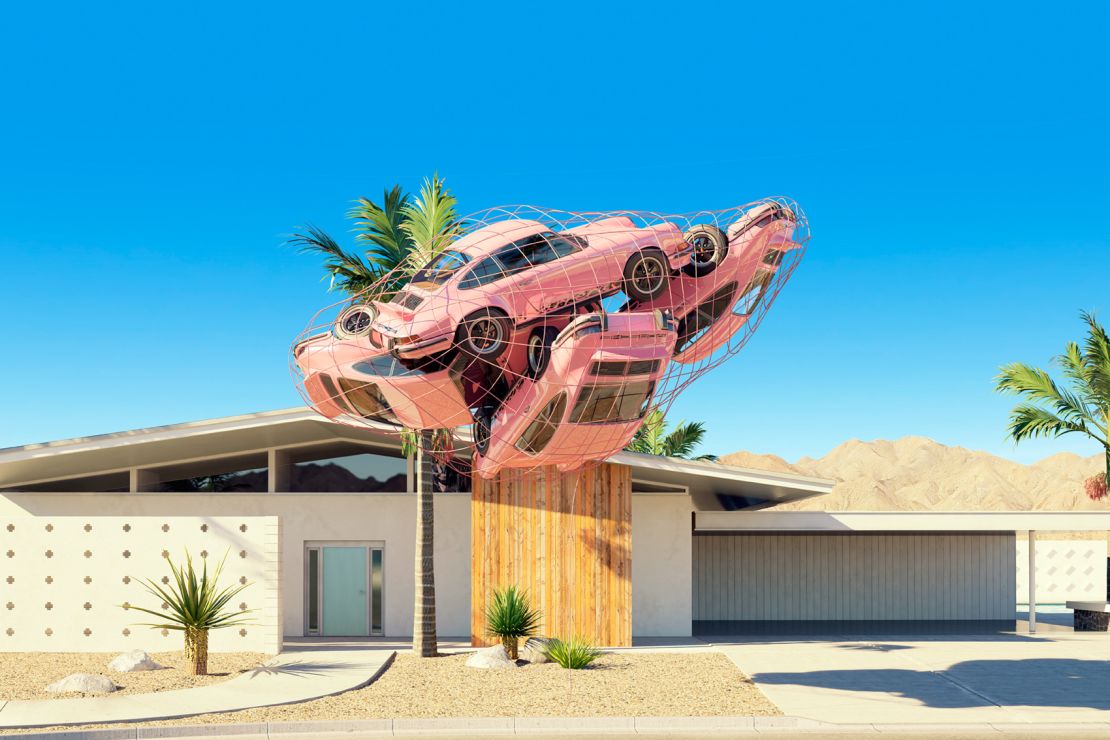For Chris Labrooy, reality is just a suggestion. Looking at his hyper-realistic manipulated images, every car is twisted, contorted and modified so expertly that, at first glance, it does appear as though reason – and gravity – have taken the day off.
In his most recent series, “911,” a fleet of Porsche Carrera RS are piled up in a swimming pool and perched atop a tree in sunny Palm Springs. In “Tokyo,” we see Sonic the Hedgehog passing by in a stretched yellow Toyota GT86. Elsewhere, a Honda NSX in spliced with a Datsun 240Z that has been cut perfectly in half. In most images, the colors are soft and the contrast is gentle, letting the bizarre shapes do most of the talking.

“I would say I’m an image-maker or illustrator, although the techniques I use are very different to traditional forms of illustration,” says Labrooy, whose graphic design clients include Apple, Citroen and Nike. He continues: “I use 3D and CGI tools, as they enable me to pursue a hyper-real aesthetic that has more in common with photography than illustration,” making it akin to how a video game is made and special effects are added to Hollywood movies.
For the love of cars
Born in Scotland, Labrooy grew up surrounded by cars – albeit toy and digital versions. From a young age, he was attracted to Scalextric racing sets, radio-controlled cars and video games such as Gran Turismo.
“Drawing cars was also a huge passion, and I would draw at least one side elevation of a car per day. Now I have bigger toys, like my (Porsche Cayman) GT4, and the actual driving part is such a big part of my enthusiasm now,” he says. “I don’t get paid for most of the car work I do, so you could call them my passion projects.”

After graduating from the Royal College of Art in London, Labrooy dabbled in furniture and product design, using 3D imaging to create products he couldn’t afford to buy. Over time, technological advancements gave him the tools to create concepts no one had seen before.
In spite of the obvious absurdity, you can sense there is method to the madness. Aside from the obvious physical similarities, the cars are often linked to their settings thematically as well.
“I tend to focus on a particular aspect of car culture that I am interested in such as Porsches, Japanese classics or American pickup trucks, for example,” Labrooy says of what inspires him. “The context is just as important as the car, and I try to select cars and places that are going to bounce off each other.”
So why cars, and not any other vehicle? “Bicycles don’t strike me as particularly emotional objects. They don’t make interesting sounds or feature beautiful glossy surfaces,” he says. “A car has so many unique facets, which give it personality and character.”
Check out more of Chris Labrooy’s work here.










